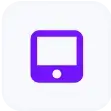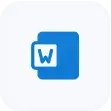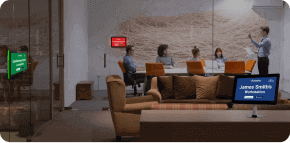Blog

Flex offices and rotating workspaces – It’s the future of workplace evolution
One of the longer-lasting legacies, of COVID-initiated work-from-home protocols, is likely going to be a discovery, by employers and employees, that you don’t have to be in the office to work. As business owners and office managers discover that given time, teams become more adept at performing work remotely, they’ll ask the obvious question: Do we really need all those offices, cubicles and desks?
The obvious answers
Many business owners might feel comfortable allowing most of their staff to continue tele-working, as they move towards shared workspaces. If you’re one of them, then you might also be wondering whether it’s time to embrace flexi offices and rotating-use workspaces. And taking a closer look at a suite of flex office software to support you might be your next logical step.
- Having clear visibility of all workspace assets within your organization
- Empowering staff to manage bookings and reservations remotely
- Helping on-premises staff quickly identify available, reserved or permanently assigned workspaces
Delivering all these answers manually, say through sign-in/out registers at the reception, or even centralized spreadsheets, may be a challenge. Not only are these tools hard to implement, but they’ll also quickly become out of sync with fast-changing reality on the office floor. To make flex workspaces truly effective, you need workplace software that really works!
The obvious solutions
Workspace management solutions technology firm DeskFlex, offers a variety software tools to make implementing flexible workspace strategies a reality. Employers may integrate these socially-enabled solutions into a comprehensive hoteling and workspace-sharing plan, for cross-organizational rollout.
- Room Booking software is the centerpiece of any employers’ flexi work strategy. The tool enables staff, managers and facility administrators to organize and manage the flexible scheduling of office space. Conference rooms, and office equipment. Coordinating varying staff schedules is easy. Because everyone has clear visibility of the status of all desks, rooms and common workspaces across the company.
- Facility and room scheduling software is yet another tool in any flexi workers toolbox. Using a simple, well-organized and intuitive interface, the software allows staff and administrators to view workspace availability. Book rooms and desks and change bookings on the fly.
- Use Workstation Touchscreens to simplify reservation of shared workstations around the office. Attached outside a workstation. These devices offer a convenient way for visiting staff to book a workstation without too many challenges.
The central concept behind flex office software, like those supported in the DeskFlex suite of applications, is to make usage planning, scheduling and managing of scarce office workspace (and other prized corporate assets) simple and efficient. By integrating these tools into corporate IT, scheduling and messaging tools, like MS Outlook, MS Exchange and Active Directory. DeskFlex’s flex office workspace solutions accomplish those key objectives.















































 Support
Support  Demo
Demo  Blog
Blog